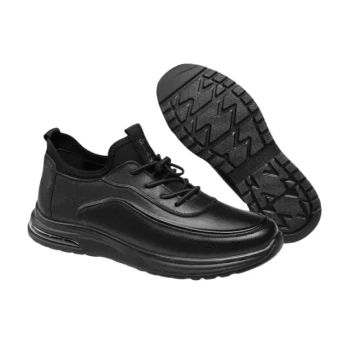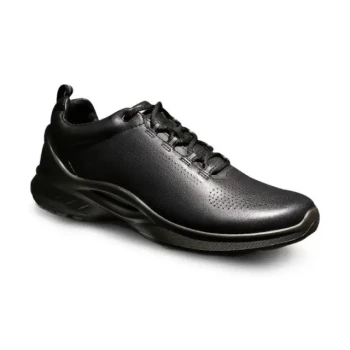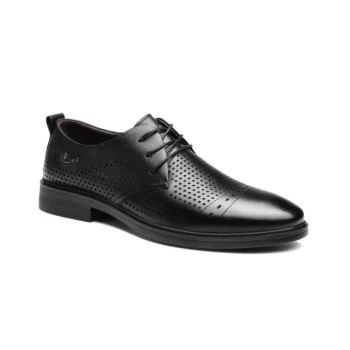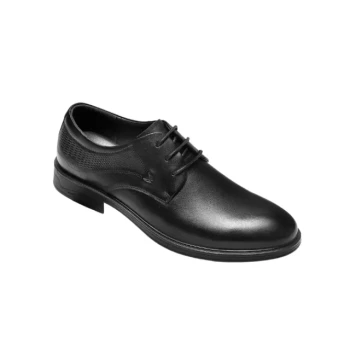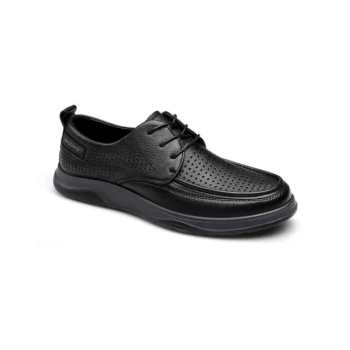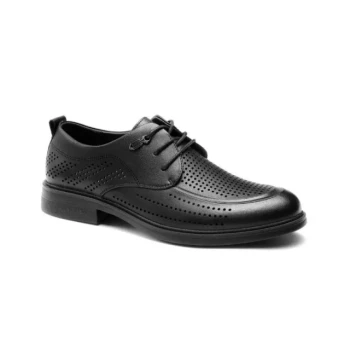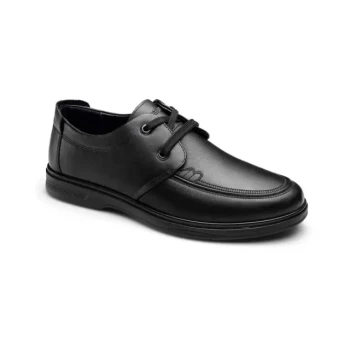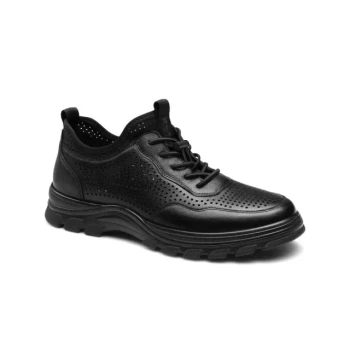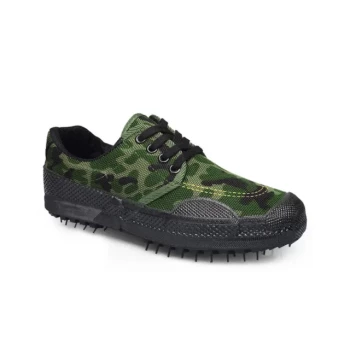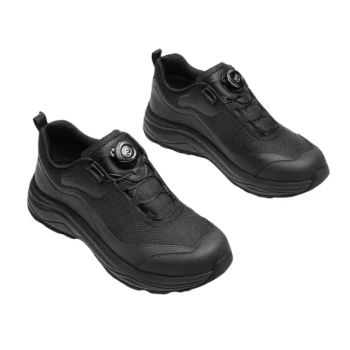When choosing exotic skin dress shoes, you must consider the type of skin, the style of the shoe, its color, and most importantly, the context and occasion. These are not everyday footwear; they are deliberate statement pieces that signal luxury and status, and their appropriateness is entirely dependent on the environment.
The core consideration for exotic skin footwear is not just quality, but context. Your primary goal is to match the boldness of the shoe's statement to the specific occasion, ensuring it enhances your presence rather than detracting from it.
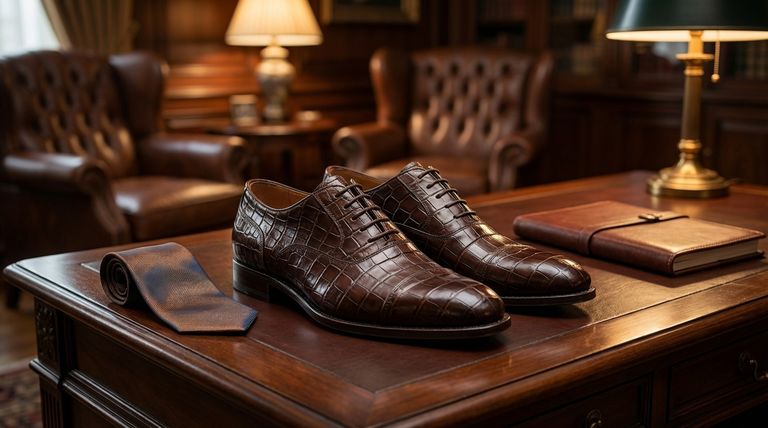
The Language of Exotic Skins
Different exotic skins communicate different messages. Understanding their distinct characteristics is the first step in making an informed choice that aligns with your personal style and the image you wish to project.
Alligator and Crocodile: The Power Statement
Alligator and crocodile are the most recognizable and impactful exotic skins. Their large, distinct tile patterns are immediately associated with opulence and authority.
These skins are best suited for situations where making a bold, confident impression is the goal. They are the least subtle option and command significant attention.
Ostrich: The Understated Connoisseur
Ostrich leather is characterized by its unique "quill" pattern, the bumps left from the bird's feathers. It offers a rich texture that is noticeably different but less overt than alligator.
This skin suggests a more nuanced, sophisticated taste. It's an excellent choice for someone who appreciates luxury but prefers a more subtle expression of it.
Lizard: The Sleek and Modern Choice
Lizard skin features a fine, tight, and repetitive scale pattern. This gives the shoe a sleek, refined, and often glossy appearance.
It is a more modern and streamlined choice compared to the classic boldness of alligator. Lizard skin works exceptionally well on sleeker shoe styles like loafers or elegant monk straps.
Aligning Formality with Occasion
The most critical error is wearing an exotic skin shoe in the wrong setting. Their powerful connotations require careful consideration of formality and environment.
Shoe Style Dictates Formality
The fundamental rules of dress shoes still apply. An oxford is the most formal style, while a monk strap is slightly less so, and a loafer is the most casual of the three.
An alligator oxford is therefore an extremely formal and powerful statement, whereas an ostrich loafer is a sophisticated but more relaxed choice for smart-casual events.
The Critical Role of Color
Color determines a shoe's versatility and level of formality. As with standard leather, black is the most formal and is best reserved for serious business or formal evening events.
Darker shades of brown offer more warmth and versatility. A deep brown or burgundy crocodile loafer can be a powerful addition to a business-casual wardrobe, while a black one is more suited to a sharp suit.
Understanding the Trade-offs
While exotic skin shoes are desirable, they come with a unique set of considerations that differ significantly from standard calfskin leather.
The High Barrier to Entry
These shoes represent a significant financial investment. Their cost is a direct result of the rarity of the materials and the high level of craftsmanship required to make them.
Limited Versatility
Exotic skin shoes are not daily wear items. Their bold nature makes them "special occasion" footwear. Over-wearing them can dilute their impact and may be seen as ostentatious in conservative settings.
The Need for Specialized Care
Unlike durable full-grain calfskin, many exotic leathers are more delicate and require specific conditioners and careful maintenance to prevent drying, cracking, or discoloration.
Making the Right Choice for Your Goal
Your decision should be guided by the specific statement you want to make.
- If your primary focus is projecting power and authority: Choose an alligator or crocodile shoe, preferably in a classic black or dark brown oxford.
- If your primary focus is showcasing sophisticated, understated luxury: An ostrich loafer or monk strap provides unique texture without being overly assertive.
- If your primary focus is a sleek, modern, and fashionable look: A lizard skin loafer in a dark, rich color is an impeccable choice.
Ultimately, the key to wearing exotic skin shoes is to wear them with the confidence their statement deserves.
Summary Table:
| Key Consideration | What to Look For |
|---|---|
| Skin Type | Alligator/Crocodile for power; Ostrich for subtlety; Lizard for a modern look. |
| Shoe Style | Oxford (most formal), Monk Strap, Loafer (casual). |
| Color | Black for formal events; brown/burgundy for versatility. |
| Occasion | Match the shoe's boldness to the event's formality. |
| Care | Requires specialized conditioners and careful maintenance. |
Ready to make a powerful statement with luxury footwear?
As a large-scale manufacturer, 3515 produces a comprehensive range of footwear for distributors, brand owners, and bulk clients. Our production capabilities encompass all types of shoes and boots, including premium exotic skin dress shoes crafted to the highest standards of quality and style. Let us help you source or create the perfect statement pieces for your collection.
Contact our expert team today to discuss your manufacturing needs and elevate your product line.
Visual Guide
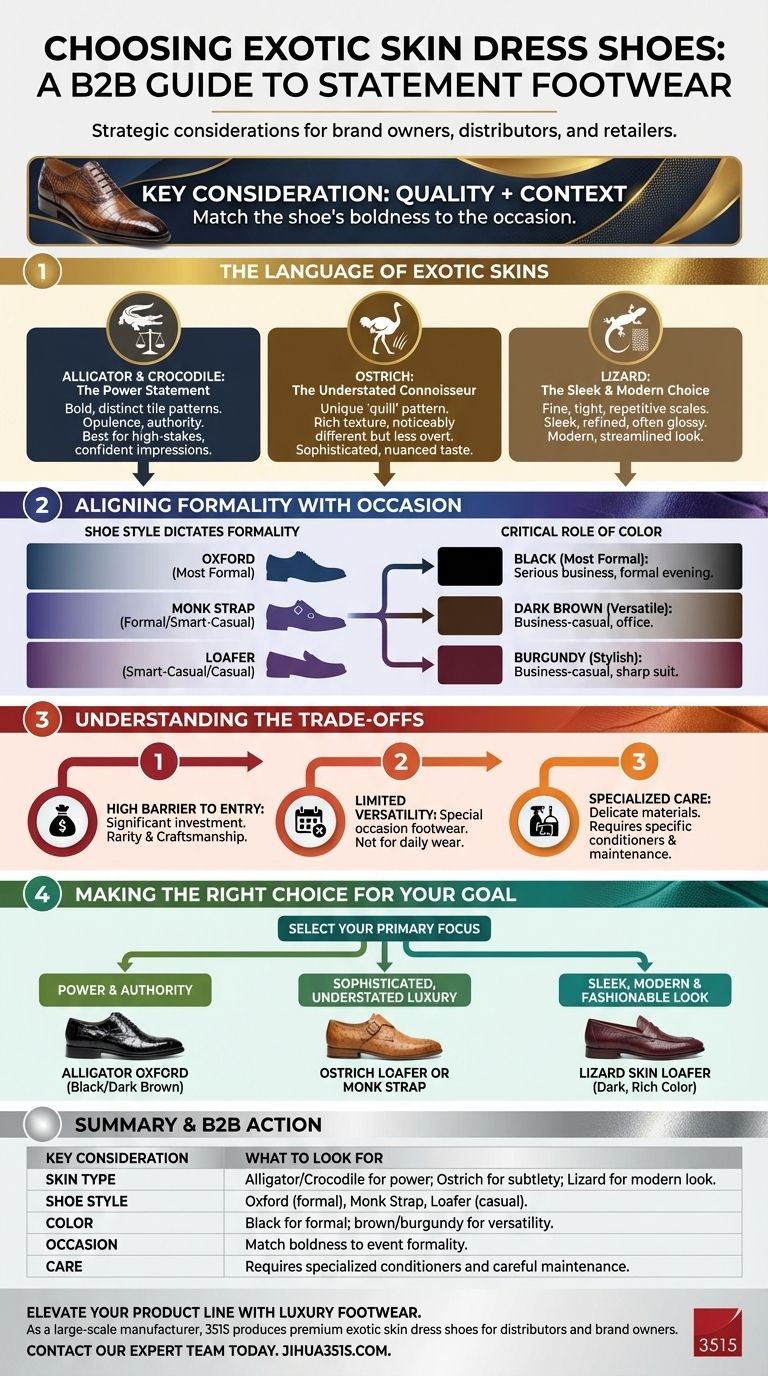
Related Products
- Custom Manufactured Air Cushion Leather Business Shoes for Wholesale
- Wholesale Leather Derby Shoes Manufacturer | Customizable Business & Dress Footwear
- Factory Direct Wholesale Leather Comfort Shoes with Dial Closure
- Wholesale Perforated Comfort Dress Shoes | Custom Derby Shoe Manufacturer
- Wholesale Comfortable Business Casual Shoes Custom Manufacturing
People Also Ask
- Are sneakers appropriate for business casual settings? A Guide to Modern Office Footwear
- What are the key features of high-quality leather in shoes? Invest in Durability and a Perfect Fit
- Why are sneakers now accepted in office environments? The Shift to Modern Professionalism
- What should be considered when choosing sneakers for a business casual office look? Achieve Comfort & Professionalism
- Are sneakers acceptable in a business casual workplace? How to Choose the Right Style
